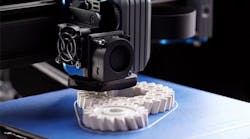With the goal of shortening development timelines by five times or more, DARPA’s Adaptive Vehicle Make (AVM) portfolio of programs is working to develop new approaches for the design, testing and manufacturing of complex defense systems.
Last week, thanks to strong early test results and a new opportunity to transition the technology, DARPA has decided to speed its current AVM successes to the defense industrial base in 2014—years earlier than originally planned.
Since the group announced the winners of AVM’s Fast, Adaptable, Next-Generation Ground Vehicle (FANG) 1 Challenge last April, initial test results show that AVM’s prototype design tools can produce viable designs and its manufacturing tools and processes can build those designs correctly and rapidly.
“AVM is at a critical threshold,” said Army Lt. Col. Nathan Wiedenman, DARPA program manager. “The FANG 1 design and build experience reduced the adoption risk of the most-developed AVM technology enough for DARPA to feel confident that these elements were ready to transition outside the agency. In addition, current AVM performers will continue development of several research areas this year – involving system behavior verification tools, manufacturability analysis and design completeness – before transitioning these as well.”
DARPA intends to transition the AVM portfolio into the defense and commercial industry through the new Digital Manufacturing and Design Innovation Institute (DMDII), one of the three institutes within President Obama’s National Network for Manufacturing and Innovation planned for launch in 2014.
DMDII is designed to be a national resource for the U.S. industrial base and increase U.S. competitiveness by accelerating innovation in digital manufacturing. The Institute will focus on the development of novel model-based design methodologies, virtual manufacturing tools and sensor- and robotics-based manufacturing networks.
“Working with DMDII can expand the number of active participants in AVM technology development and help extend the potential application of AVM research to non-military domains,” Wiedenman said. “Sitting at the crossroads of government, industry and academia, DMDII offers the best possible chance for AVM technology to successfully transition to industry—to the ultimate benefit of warfighters—as quickly as possible.”










